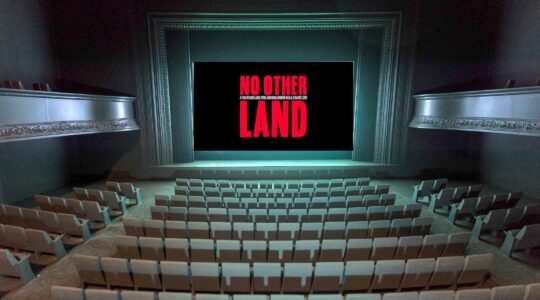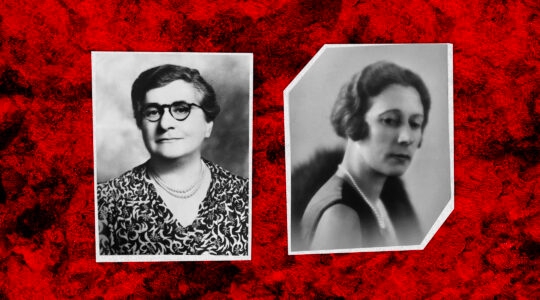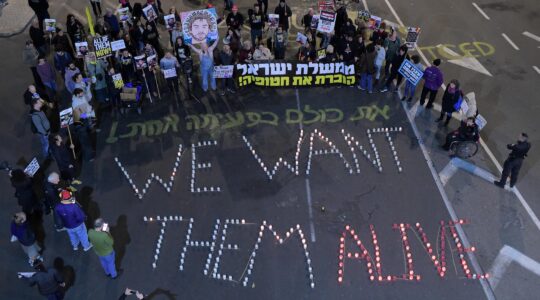(JTA) — The Supreme Court handed the country a Thanksgiving surprise just before midnight last Wednesday, vindicating the religious liberty claims advanced by both Agudath Israel and the Brooklyn Diocese against New York’s restrictions on houses of worship.
Understanding the decision requires appreciating both the modesty of the high court’s order and the boldness of its logic. While the court struck down 10- and 25-person occupancy maximums for religious congregations, it did not restrict the states from imposing other important restrictions aimed at slowing the spread of COVID-19.
Rightly interpreted, the court’s decision ought to be read as a cautionary tale for governors who impose restrictions on religious institutions that both go far beyond those imposed on essential businesses — and do so under circumstances where less restrictive guidelines might meet the demands of public health. But importantly, such an approach, which aims to make room for religious liberty by relying on more tailored restrictions, only works if the public remains vigilant in its compliance to whatever public health guidelines remain in effect.
The emergency relief granted by the Supreme Court last week was relatively modest. At issue was Governor Cuomo’s recent executive order that addressed pandemic “hot spots” by identifying areas for heightened restrictions where COVID-19 cases were increasing — termed yellow, orange and red zones as the severity increased. The rules in New York state not only imposed capacity restrictions on houses of worship based on their size, but also additional attendance maximums — 10 people in red zones and 25 people in orange zones — regardless of the size of the house of worship.
The plaintiffs asked the Supreme Court to enjoin these attendance maximums and allow large houses of worship — many of the plaintiff churches had capacity well over 1,000 — to host, for example, more than 10 people while in a red zone.
The court’s decision last week ultimately did just that. It granted relief against the 10- and 25-person attendance maximums. However, houses of worship remain subject to the overall capacity restrictions. Accordingly, churches and synagogues in red zones still can only admit a maximum of 25% of their capacity — and in orange zones, 33% of their capacity.
It’s important to note that the emergency relief granted by the Supreme Court was also only temporary. The court’s order will be in place until the case is heard on the merits by a federal court of appeals in mid-December, and then will remain in place through any potential appeal and resolution of the case before the Supreme Court.
Although the court expressed concern with some of the statements by Cuomo singling out the Jewish community, it focused most of its analysis on the manner in which New York’s rules treated religious worship worse than other types of nonreligious conduct. In contrast to houses of worship, essential businesses — such as groceries and pet stores — could open without any capacity restrictions in red and orange zones. This difference in treatment, the court said, constituted a form of prohibited discrimination under the First Amendment.
This sort of religious liberty analysis — evaluating the constitutionality of restrictions on religious worship by comparing them to other restrictions — has been quite common throughout the pandemic. The key question is picking out the right apples-to-apples comparison. The plaintiffs were undoubtedly correct that New York imposed more restrictions on religious worship than it did on essential businesses. At the same time, houses of worship were treated better than many businesses deemed nonessential, which could not open in red zones at all. In orange zones, high-risk nonessential businesses — such as gyms — remained closed although low-risk nonessential businesses could open without capacity restrictions.
All this given, how should we evaluate claims of religious discrimination?
The court’s record in answering this sort of question during the pandemic has been uneven. Its first foray came in the form of a concurring opinion back in May by Chief Justice John Roberts addressing a challenge to California’s restrictions on houses of worship. In trying to figure out the right comparison, Roberts’ analysis began by identifying the government interest in regulating religious worship: the need to protect public health. So long as states treat houses of worship as they do other institutions that present similar risks — and impose similar restrictions — then there is no constitutional issue. In the California case, the state had indeed treated houses of worship as well or better than “lectures, concerts, movie showings, spectator sports and theatrical performances, where large groups of people gather in close proximity for extended periods of time.” California’s rules passed Roberts’ constitutional test.
But two months later, a Nevada church challenged the state’s COVID restrictions, which prohibited houses of worship from admitting more than 50 people while casinos and other institutions were permitted to admit up to 50% of their capacity. The court declined, without explanation, to issue emergency relief even though casinos would appear to present far more risk than houses of worship.
While Nevada argued it gave casinos more leeway because they were more easily monitored, the four conservative justices, who had already objected to the court’s decision back in May, issued harsh dissenting opinions accusing the majority of allowing Nevada to continue implementing rules that treated houses of worship far worse than other analogous institutions. This, they argued, constituted a form of religious discrimination prohibited by the First Amendment because the discrepancy appeared to be based on the state valuing casinos more than houses of worship.
This backdrop highlights the significance of the court’s opinion last week. First, its decision represented the first time the court had intervened to lift restrictions during the pandemic on account of religious liberty. Second, the court determined that it was unconstitutional for houses of worship to be capped at 10 people regardless of their capacity, but for essential businesses “such as acupuncture facilities, camp grounds, garages, as well as … all plants manufacturing chemicals and microelectronics and all transportation facilities” to have no capacity restrictions.
What the court did not do, however, is compare houses of worship to the sorts of “gatherings where large groups of people gather in close proximity for extended periods of time” — which remained shuttered under New York rules — the very mode of analysis it had invoked back in May although neglected in July. What led the court to modify its approach?
The easy version of the answer is that the composition of the court has changed. Justice Amy Coney Barrett’s confirmation to the seat held by the late Ruth Ginsburg certainly provided the fifth vote to the majority in its decision to grant emergency relief to the plaintiffs. But there’s more to the case than that.
It’s important to note that the court did not strike down the entirety of Cuomo’s executive order. Rather it specifically took issue with the 10- and 25-person attendance restrictions while leaving the other capacity restrictions in place. Those attendance restrictions, in the court’s view, were simply too extreme — not only as compared to the lack of restrictions on essential businesses, but when compared to, in the words of the court, “those adopted by many other jurisdictions hard-hit by the pandemic and far more severe than has been shown to be required to prevent the spread of the virus at the applicants’ services.”
The court noted that New York could have adopted less restrictive rules that would have better addressed religious liberty concerns while still protecting public health, such as tying “maximum attendance at a religious service … to the size of the church or synagogue.”
Indeed, some justices who chose to dissent from the majority opinion balked at these unyielding attendance maximums. Roberts noted that “[n]umerical capacity limits of 10 and 25 people, depending on the applicable zone, do seem unduly restrictive” and “may well … violate the Free Exercise Clause.” Justice Stephen Breyer in his dissenting opinion, joined by Justices Elena Kagan and Sonia Sotomayor, described the attendance maximums as “severe,” noting that 10- and 25-person maximums “are indeed low.”
For some of the dissenting justices, the reason not to grant the plaintiffs emergency relief had less to do with the merits of the case and more to do with whether the present circumstances were sufficiently exigent to justify the court’s intervention while the case was still pending before a lower federal court. Thus the court’s calculus appears to have been a combination of multiple considerations woven together.
What this means going forward is that states with specific rules for religious worship will need to be mindful of discrepancies whereby houses of worship face unyielding restrictions that both fail to take their capacity into account and are significantly out of line with the restrictions imposed on essential businesses.
The court was careful to strike down only the most severe elements of New York’s restrictions, and its logic demanded this sort of distinction. It was because New York could still impose capacity restrictions on houses of worship — tying attendance limitations to the size of the church or synagogue — that the state’s insistence on also imposing attendance maximums were unconstitutional. Put differently, New York’s limits violated the First Amendment, in part, because there were less restrictive alternatives that could also effectively meet the demands of public health.
But such alternatives, such as capacity restrictions based on the size of the house of worship, are only effective if the relevant faith communities adhere to them. In this way, the court’s decision reflects a bargain of sorts. If religious communities remain committed to the demands of public health — if they adhere to the remaining capacity and other attendant COVID guidelines — then courts have the leeway to strike down the most onerous of restrictions on religious worship. But if religious communities choose to pocket this win and flout the remaining rules, it will raise serious questions with the court’s analysis.
Ultimately, the Supreme Court told New York that extreme regulation of religion was unconstitutional — and it told religious communities that it will rely on less restrictive regulations if compliance ensures the effectiveness of those regulations. Let’s hope that both sides can live up to their ends of the bargain.
JTA has documented Jewish history in real-time for over a century. Keep our journalism strong by joining us in supporting independent, award-winning reporting.







